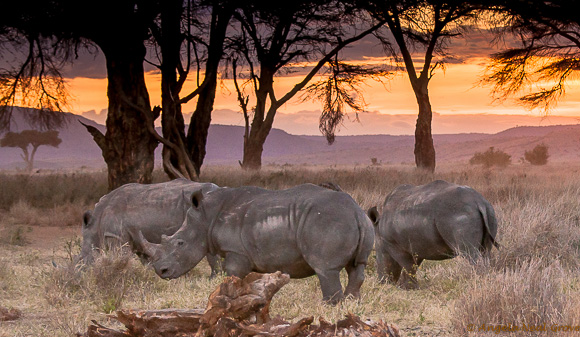
By the Light of the Moon
Next Tuesday April 15 there will be a full moon. Next Tuesday in Kenya, seven rhino will die.
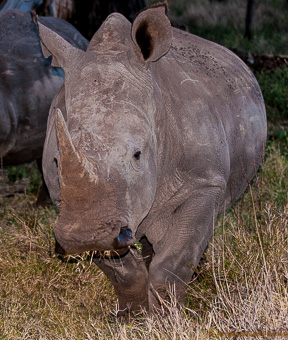
This shocking statistic was stated by Mike Watson, CEO of Lewa Wildlife Conservancy. He was addressing a group of supporters in California’s Silicon Valley. Ian Craig, Founder, Lewa Wildlife Conservancy and Northern Rangelands Trust, and Buzz Thompson of the Stanford Woods Institute also addressed conservation issues in Kenya to the multigenerational group.
Lewa’s Role
Lewa is a 62,000 acre wildlife sanctuary in Northern Kenya which I recently visited and photographed. Like so many visitors I was awed by both its beauty and mission to act as a catalyst for conservation. Formed in 1995 it was once a cattle ranch, managed by the Craig/Douglas family. It became a black rhino sanctuary before evolving into a wildlife conservancy which has become a gold standard model.
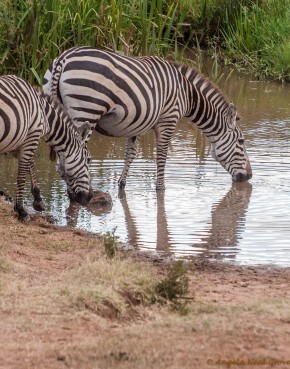
Future of African Wildlife
Poaching is rampant. Armed with AK 47’s, poachers belong to organized crime syndicates and use an increasingly high tech, sophisticated approach. In response, Lewa has a highly-trained security and patrol unit, electric fences and is considering drones. Their crack K-9 teams are in demand throughout Kenya. I went out with bloodhound Tony and saw how rapidly he can snag an intruder. Tony and his handler have just been given advanced special skills training.
Education and awareness are essential. Everyone must be involved in the race to save the world’s heritage of magnificent wildlife.
Headquartered at Lewa is Northern Rangelands Trust. It is an innovative partnership with African communities who have given land for the preservation of wildlife. It has its own education program where conservation and ecology are included in the curriculum. For more on these schools and the dedicated staff see Girl Rising: Spotlight on Kenya
Silicon Valley Lewa Summit
An Evening of Conservation and Sustainability: From Kenya and Beyond was fittingly held at Tah.Mah.Lah. home of Linda Yates and Paul Holland. Dubbed one of the greenest homes in America their goal was to create a house going beyond energy independence, fitting seamlessly into the ecosystem and actually restoring the land. The name Tah.Mah.Lah is from the Native American Ohlone phrase for mountain lion.
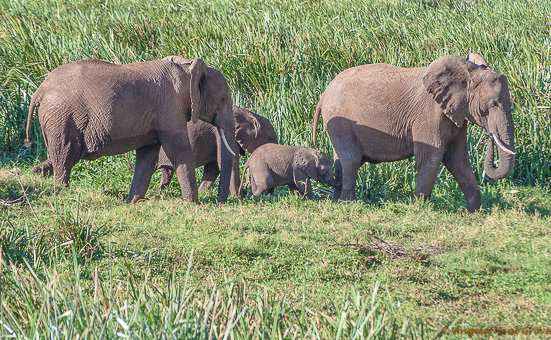
As guests gathered in the great room, with its soaring ceiling, there was a buzz, an energy to make a real difference in protecting wildlife and other serious issues facing Kenya. Everyone had a voice from teens – who suggested raising awareness through Instagram, to Linda and Steve Millard who constantly lead safaris to Kenya, and Buzz Thompson from Stanford who is taking students to Africa.
However as I walked down the path to my car, accompanied by the a cappella of bull frogs happy in restored wetland, the thought of seven magnificent rhino being needless slaughtered at the next full moon was like a lead weight.
Incidentally there will be a lunar eclipse at the next full moon on April 15. It will turn the moon red. A phenomenon called Blood Moon. Unfortunately prescient as murder will happen by the light of that moon.
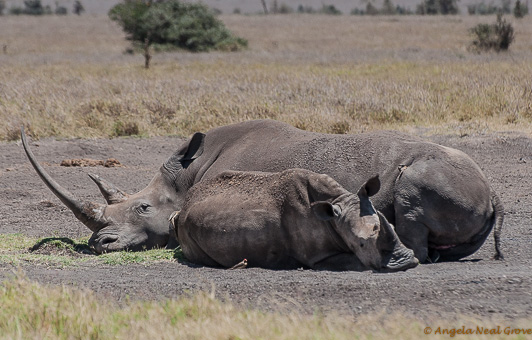
I wrote about the plight of the rhino, Keep Rhino’s Horny, in my September 22 post for World Rhino Day. There I detailed the facts about poaching rhino horn.
To find out more about Tah.Mah.Lah. see below